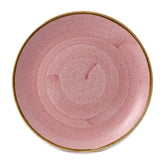The Ultimate Guide to Choosing the Right Commercial Kitchen Ventilation

Importance of choosing the right commercial kitchen ventilation system
Having proper ventilation system in a commercial kitchen is of utmost importance. It not only ensures the safety and comfort of the kitchen staff but also plays a crucial role in maintaining the quality of the food being prepared. Choosing the right commercial kitchen ventilation system is a decision that should not be taken lightly. In this comprehensive guide, we explore the importance of selecting the right ventilation system and highlight the common mistakes made in the process.
A well-designed ventilation system helps in removing heat, smoke, steam and odours from the kitchen creating a healthier and more pleasant environment for the kitchen staff. It also aids in preventing the accumulation of grease and airborne contaminants, which can lead to fire hazards and health issues. Additionally, an effective ventilation system helps maintain the performance of kitchen equipment by reducing the build-up of heat and grease.
Common mistakes to avoid when selecting a ventilation system
When it comes to selecting a commercial kitchen ventilation system, there are several common mistakes that many business owners make. By being aware of these mistakes, you can avoid costly errors and ensure that you choose the right system for your kitchen.
One common mistake is underestimating the size and capacity requirement of the ventilation system. It is essential accurately calculate the size of you kitchen and the amount of heat, smoke, and odours that need to be removed. Failure to do so can result in an inefficient ventilation system that fails to adequately remove contaminants from the air.
Another mistake to avoid is neglecting to consider energy -efficient system can save you cost consideration. Choosing a energy-efficient system can save you significant costs in the long run. It is important to look for systems with high efficient motors and variable speed controls, which can help reduce energy consumption and lower utility bills.
Understanding the different types of commercial kitchen ventilation systems
Before selecting a commercial kitchen ventilation system, it is crucial to understand the different types available in the market. Each type has its own set of advantages and is suitable for specific kitchen setups and cooking methods.
Exhaust-only ventilation systems: These systems are designed to remove hear, smoke, and odours from the kitchen by exhausting them to the outside. They are commonly used for smaller kitchens or kitchens with low cooking volumes.
Supply only ventilation systems: Unlike exhaust only systems, supply only systems introduce fresh air into the kitchen. They are often used in kitchens with high heat loads or where the air quality needs to be improved.
Exhaust and supply ventilation systems: These systems combine both exhaust and supply functions. They provide a balanced airflow by removing contaminated air and introducing fresh air into the kitchen. The type of system is suitable for larger kitchens with high cooking volumes.
Factors to consider when choosing a ventilation system
Selecting the right commercial kitchen ventilation system requires careful consideration of various factors. By taking these factors into account, you can ensure that the chosen system meets your kitchen requirements.
Kitchen size and layout: The size and layout of your kitchen play a significant role in determining the type and size of the ventilation system needed. Consider factors such as the number of cooking appliances, the location of the appliances, and the overall square footage of the kitchen.
Cooking methods and heat load: Different cooking methods generate varying levels of heat, smoke, and odours. It is important to choose a ventilation system that can effectively handle the specific cooking methods used in your kitchen. Additionally, consider the heat load generated by the cooking appliances and select a system with adequate capacity to handle the heat.
Airflow requirement: Proper airflow is essential for an effective ventilation system. Calculate the required airflow based on the size of your kitchen and the type cooking. Consider factors such as the number of air changes per hour and the recommended capture and containment velocities for different cooking appliances.
Sizing and capacity requirements for commercial kitchen ventilation systems
Sizing and capacity requirements are crucial aspects to consider when selecting a commercial kitchen ventilation system. Incorrect sizing can lead to an ineffective system that fails to remove contaminants from the air properly. Here are some important factors to consider when determining the size and capacity of your ventilation system.
Cubic Feet per Minute (CFM): CFM is a measurement of the volume of air that the ventilation system can move in one minute. It is essential to calculate the CFM requirements based on the size of your kitchen.
Hood Capture Area: The hood capture area refers to the size of the hood that covers the cooking appliances. It is crucial to ensure that the hood capture area is properly sized to capture the smoke, heat, and odours generated by the appliances. A hood that is too small will result in poor ventilation performance.
Ductwork design: This design of the ductwork plays a significant role in the overall performance of the ventilation system. Proper duct sizing and design ensure that the air is effectively removed from the kitchen and exhausted to the outside. Incorrect ductwork design can result in poor airflow and increased energy consumption.
Remember to consult a professional ventilation system supplier or engineer to accurately determine the sizing and capacity requirements for your specific kitchen setup. They have the expertise and knowledge to guide you in selecting the right system.
Ventilation system installation and maintenance
Proper installation and regular maintenance are essential for the effective functioning of commercial kitchen ventilation system. Improper installation can lead to reduced performance, increased energy consumption, and safety hazards. Regular maintenance ensures that the system operates at its optimal level and prolongs its lifespan. Here are some key points to consider regarding installation and maintenance.
Professional installation: It is highly recommended to have a professional install the ventilation system. They have the expertise to ensure that the system. They have the expertise to ensure that the system is installed correctly, including the proper placement of hoods, ducts, and exhaust fans. Professional installation also ensures compliance with local regulations and codes.
Regular cleaning and maintenance: Regular cleaning and maintenance of the ventilation system are crucial to ensure its proper functioning. Grease build-up in hoods and filters can decrease decrease the system's efficiency and pose a fire hazard. Create a maintenance schedule that includes cleaning the hoods, filters, and ductwork, as well as inspecting the exhaust fans and motors.
Filter replacement: Filters play a vital role in capturing grease and contaminants from the air. Regularly inspect and replace filters as need to maintain optimal performance. Consult the manufacturer's guidelines for the recommended filter replacement schedule.
Energy efficiency and cost considerations
Energy efficiency and cost conversions should not be overlooked when choosing a commercial kitchen ventilation system. An energy-efficient system can significantly reduce utility bills and lower the environmental impact. Here are some factors to consider regarding energy efficiency and cost.
Motor efficiency: Look for ventilation systems with high efficiency motors. These motors consume less energy and reduce energy efficiency and costs.
Variable speed controls: Systems with variable speed controls allow you to adjust the fan speed based on the cooking load. This helps conserve energy by reducing fan speed when less ventilation is required.
Energy recovery systems: Consider systems with energy recovery features. These recover heat from the exhaust air and use it to preheat incoming fresh air, reducing energy consumption.
Lifetime costs: When evaluating the cost of a ventilation system, consider the lifetime costs , including installation, maintenance, and energy consumption. A system with slightly higher upfront cost but lower lifetime costs may prove to be more cost effective in the long run.
Noise and odour control in commercial kitchen ventilation systems
In a commercial kitchen, noise and odour control are essential considerations when selecting a ventilation system. Excessive noise can disrupt the working environment and affect the comfort of the kitchen staff. Odour control is crucial for creating a pleasant dining experience for customer. Here are some strategies to address noise and odour control.
Noise reduction: Look ventilation systems with noise reduction features, such as insulated hoods and fans with low noise levels. Consider the noise ratings provided by the manufacturer and choose a system that meets your requirements.
Odour removal: To control odours effectively, ventilation systems should include features such as activated carbon filters or uv light technology. These features help remove odours and improve air quality in the kitchen.
Compliance with local regulations and codes
Compliance with local regulations and codes is a vital aspect of selecting a commercial kitchen ventilation system. Failure to comply with these regulations can result in fine, closure of the establishment, and even legal issues. It is crucial to consult local authorities and understand the specific ventilation requirements for your area. Here are some key points to consider.
Fire safety regulations: Ventilation systems should comply with fire safety regulations, including the proper installation of fire suppression system and the use of fire rated materials.
Health department regulations: Health departments often have specific requirements for ventilation systems in commercial kitchens. These requirements may include the use of specific types of filters, the location of exhaust vents, and the capture and containment of grease and contaminants.
Noise regulations: Some areas may have noise regulations that commercial kitchens must adhere to. Ensure that the selected ventilation system meets the noise level requirements specified by local regulations.
Choosing the right supplier for your commercial kitchen ventilation system
Selecting the right supplier for your commercial kitchen ventilation system itself. A reliable supplier will provide you with quality products, expert guidance, and excellent customer service.
In conclusion, choosing the right commercial kitchen ventilation system requires careful consideration of various factors. By avoiding common mistakes and understanding the different types of system available, you can make an informed decision that meets your specific kitchen requirements. Ensure proper sizing and capacity, consider energy efficiency and cost, address noise and odour control, comply with local regulations, and choose a reliable supplier. By following this ultimate guide, you can avoid costly errors and create a safe and comfortable environment in your commercial kitchen.







